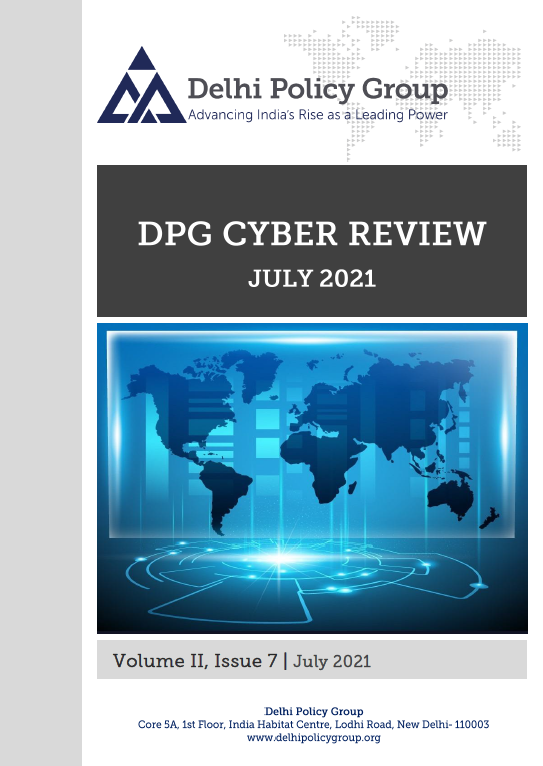Vol. II, Issue 7
Date: August 02, 2021
The sixth anniversary of Digital India on July 1 had something to cheer about. Ranking way ahead of China and Pakistan, India secured 10th place in the ITU’s Global Cybersecurity Index 2020. Notwithstanding the global ranking, India continues to face phishing attacks from cyber espionage groups from Pakistan and other adversaries. India is among the top three countries facing such attacks. The controversy over the IT Rules on Social media intermediaries seems to have subsided with the change of guard at the nodal ministry, as also compliance of the provisions by most tech platforms.
Early roll out of 5G network in India would need policy intervention for optimum spectrum auction and a conducive device eco-system suitable for multiple frequency bands.
On the international front, the revelations regarding Pegasus cyber surveillance, affecting 34 countries and including several world leaders, exposed the menace of unrestricted abuse of surveillance tools. This calls for global norms to bring about greater oversight and transparency.
The US has taken several measures to protect its domestic networks and critical infrastructure from cyber-attacks. These include diplomatic censure of China by the US and its allies, the issue of a National Security Memorandum for protecting critical infrastructure and a joint Cyber Security advisory detailing tactics, techniques and procedures (TTPs) used by Chinese state-sponsored threat actors.
With the continuing global chip shortage, geopolitics continue to drive the push for achieving self-sufficiency in semiconductor manufacturing and address supply chain vulnerabilities. New industrial policies are being initiated both by the west and China towards this end. China has also hardened its regulatory controls over its tech industry to fix certain anticompetitive practices and data security threats.
The UN Security Council held its first-ever open debate on maintaining peace and security in cyber space on June 29.
Early roll out of 5G network in India would need policy intervention for optimum spectrum auction and a conducive device eco-system suitable for multiple frequency bands.
On the international front, the revelations regarding Pegasus cyber surveillance, affecting 34 countries and including several world leaders, exposed the menace of unrestricted abuse of surveillance tools. This calls for global norms to bring about greater oversight and transparency.
The US has taken several measures to protect its domestic networks and critical infrastructure from cyber-attacks. These include diplomatic censure of China by the US and its allies, the issue of a National Security Memorandum for protecting critical infrastructure and a joint Cyber Security advisory detailing tactics, techniques and procedures (TTPs) used by Chinese state-sponsored threat actors.
With the continuing global chip shortage, geopolitics continue to drive the push for achieving self-sufficiency in semiconductor manufacturing and address supply chain vulnerabilities. New industrial policies are being initiated both by the west and China towards this end. China has also hardened its regulatory controls over its tech industry to fix certain anticompetitive practices and data security threats.
The UN Security Council held its first-ever open debate on maintaining peace and security in cyber space on June 29.



